
views
Finding Beavers
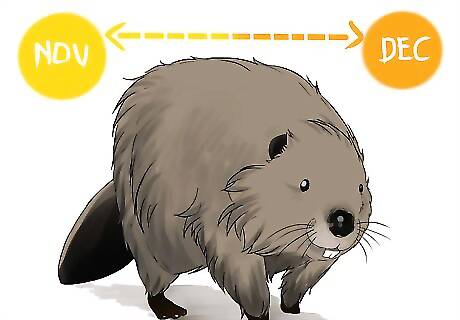
Know the legality of beaver trapping in your location. Beavers are only rarely subject to the strict hunting laws that many larger types of game like elk and deer are. However, depending on your state, the rules regarding beaver trapping may range from virtually nonexistent to somewhat limiting. In some states where beaver populations are high and trapping demands are low, like Georgia, beaver season lasts year-round. In other states, like North Carolina, there are designated seasons for beaver trapping. Before buying a trap or planning a trapping expedition, it's wise to double-check trapping laws in your area. Note that, in states that have a season for beaver trapping, the season usually extends from about November or December to, at latest, about March or April. Beaver pelts are at their best during the winter months.

Know beavers' natural habitat. Though the North American beaver is native to Canada, it can now be found across the continent, from isolated pockets in northern Mexico to all but the coldest, northernmost reaches of the Canadian wilderness. Beavers are aquatic mammals, so they are are typically found in and around lakes, streams, and rivers. They often build dams and dwellings called lodges in these bodies of water, and are quick, industrious builders, using mud, branches, and, famously, trees in their structures. Because beavers rely on the presence of water and suitable foliage to build their dwellings, this means that in arid or desert environments, like the southwestern United States and parts of Mexico, beavers are not found. They are also not found on the Florida peninsula. Additionally, though beaver were nearly hunted to extinction in Europe, they can now be found in Poland, Czechoslovakia, and several other Eastern European countries.
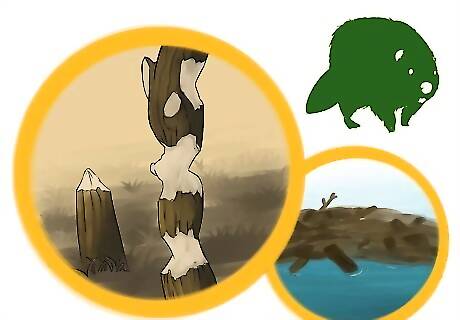
Look for signs of beaver presence. Beavers' practice of building lodges and dams naturally leads to several telltale signs of their presence. One is, obviously, the structures themselves, which are often relatively easy to spot. From the outside, lodges resemble large piles of branches, mud, and foliage located in and around rivers, streams, lakes, and the like. Dams can be composed of felled trees as well, and, like an artificial dam, produce a buildup of water on one side and cause water to rush around the sides or through any holes. Another sign of beaver presence is felled trees. Trees that have been felled by beaver leave stumps with a cone-like point, rather than the flat cross-section a chainsaw would leave or the sideways jagged cut from an axe. If you spot a beaver lodge or dam, look for a well-worn beaver path. Beavers can repeatedly take the exact same route to and from their structures, leaving a defined trail on the structure itself or in the surrounding area. These paths are an ideal spot to lay your trap.
Setting The Trap

Find a suitable trap location. The ideal place to set a body grip is in an area you know the beaver will pass through. You'll probably want to set your trap at the entrance to a beaver lodge, in a narrow, shallow canal near a dam or lodge, or along a well-defined beaver path. Alternatively, you may want to set your trap so that the beaver must pass through it to reach bait (usually castor scent) that you've set.
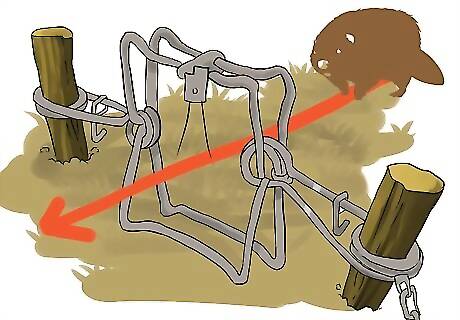
Lay the trap flat on the ground. When set, bodygrip traps (often referred to by the brand name "Conibear") create a vertically-standing square "portal". When a beaver walks through this space, the edges of the spring swing down, trapping the beaver by its neck and (ideally) killing it instantly.To begin setting this type of trap, first lay it on the ground in the area where you'd like to set the trap. Don't set the trap and then try to carry it to its final location. These traps can be triggered by delicate motion and can cause injury to humans. When you lay the trap down, look for two springs - one on each side of the central "square". If the two wing-like springs are pointing to the inside of the trap, turn the springs to the outside of the trap so that the rounded end of each points away from the central "square" jaws.

Compress one of the springs. Though it's possible to set a bodygrip trap with just your hands, it's advisable to use a pair of special metal sticks called "setting tongs" or "setting tools." These long metal tools allow you to set the trap while keeping your hands and fingers free, so as to avoid the risk of injury. Whether or not you use these setting tongs, take one spring and compress it, aligning the spring over the trap's central joint. When the spring is compressed, set the safety catch. This is usually a small hook attached to the spring itself, which keeps the spring compressed while you complete the rest of the steps necessary to set the trap. Warning - once one spring is compressed, you should consider the trap "live", as its jaws can now snap together with force if it's sprung. Whether you're using setting tongs or not, use caution when handling the trap from this point forward.
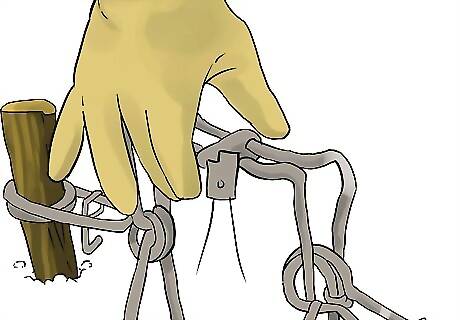
Compress and "hook" the other spring. Though some only use one spring, most common body grip traps employ two springs to give the jaws added power. If your trap has two springs, compress the second spring as you did the first and latch it shut with the safety hook. When both springs are compressed, carefully align them over the trap's central joints.
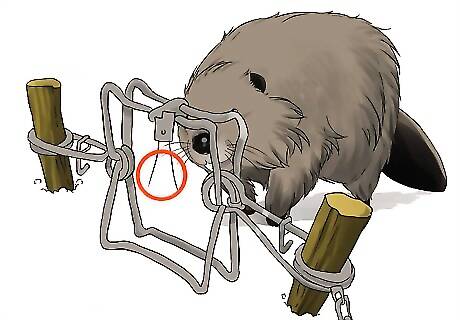
Turn the trap vertically with the dog and trigger on the top. Body grip traps are set vertically to allow beavers to walk through them and spring the trap. Very carefully stand your trap up so that two parts of the trap called the "dog" and "trigger" are on the top edge of the trap. The dog is a toothed or notched piece that secures the trap's jaws together when it's set. Essentially, it holds the trap open until it's sprung. The trigger is a thin, whisker-like piece that's used to spring the trap. The whisker hangs down between the jaws. When a beaver walks through the trap, it pushes on the trigger, releasing the dog and causing the jaws to swing shut.
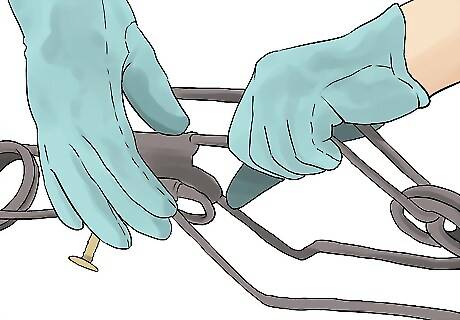
Set the dog and trigger. Carefully compress the trap jaws. Set the trigger in the desired notch of the dog, then insert the trap's forward jaw in this notch. Carefully cease compressing the jaws - the dog should delicately hold the trap open.
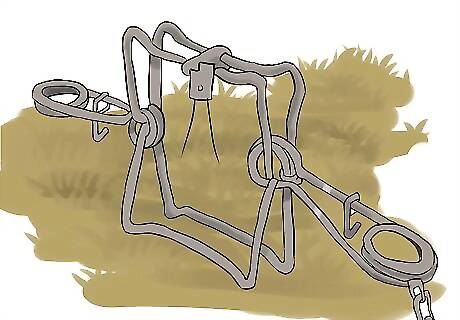
Remove the safety hooks from the springs. Ever-so-carefully remove each spring's safety hook and slide them towards the coiled end of the springs. Your trap is now set and should be considered dangerous. Don't move or handle it without carefully resetting the safety hooks, and even then, only do so if necessary.
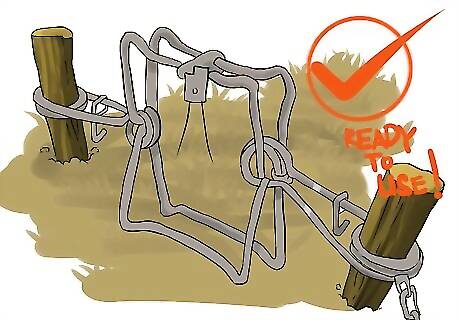
If necessary, use stakes for support. Most body grip traps can be set independent of any external supports, but, to keep your trap secure, you may want to use such supports anyway. Secure a trap by the circular, coiled ends of its springs - never by the square jaws. Either loop wire through each coil and tie the wire to a nearby object or drive a thin, sturdy stake through each coil. In either case, do so before setting your trap to minimize the chance of injury.

Find a submersed site. Foothold traps require an animal to step on them - when it does, the jaws of the trap swing shut, trapping the animal's foot or leg in the trap. Because this doesn't kill the animal immediately, with beavers, it's important to only set such traps underwater so that the animal drowns when trapped. If set on land, the beaver may endure prolonged suffering and may even be killed by a coyote or other small predator from which it can't escape. Set a foothold trap in the shallow water at the edge of a lake or stream at a spot where a beaver path meets the water (called a "slide"). Though it should be in shallow water so that the beaver steps on the trap rather than swims over it, the water must be deep enough to drown the animal - usually about 8–10 inches (20.3–25.4 cm) of water will do. Additionally, because you want the beaver to trigger the trap by stepping on it, set your trap off-center (about 6 inches) in the slide. If you set it in the center, the beaver may simply walk over the trap without stepping on it.
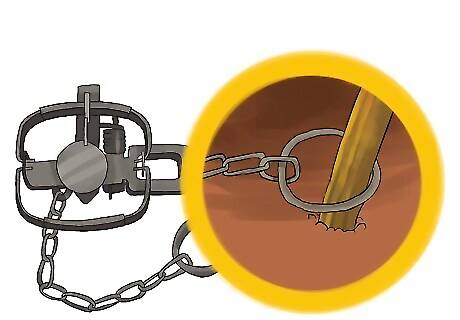
Secure the trap's chain. Foothold traps usually have a short length of chain attached. This is so that they can be attached to the ground or a nearby object - if they aren't, the trapped, scared, possibly wounded animal may flee, taking your trap with it. For beaver, use a stake to drive the chain into the earth as far away from the trap itself as the length of the chain will allow. Stake the chain in the water, not on land. Use a deep, strong, sturdy stake.You don't want to give the beaver any slack in the chain that will allow it to move towards land once the trap is sprung. Bad stake placement can allow the beaver to reach a spot where it can breathe once the trap is sprung, prolonging its suffering.
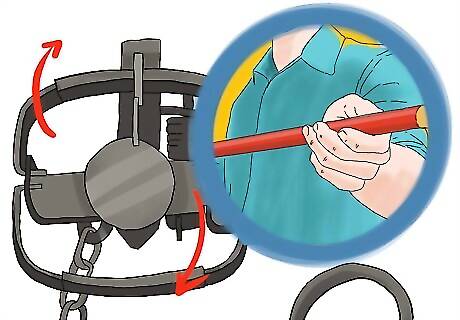
Compress the trap's springs. Foothold traps come in a wide variety of styles, but most have powerful springs attached to levers that run parallel to the trap's jaws. Use the levers to compress these springs and open the jaws. Be very careful not to allow your hands to slip or to let any fingers go between the jaws. For some models of foothold trap, you may find it easier and safer to set the trap on the ground, compress the springs by stepping on them, and then bend over and do the rest of the steps, keeping the springs compressed with your feet.
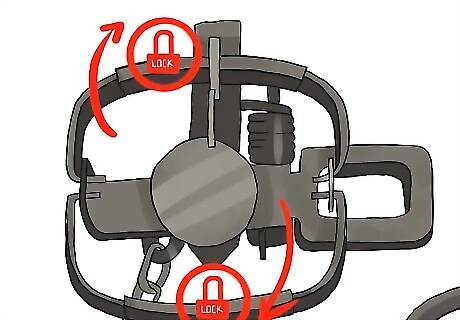
Hold the jaws open as you latch the dog. Keep constant pressure on the trap so that it doesn't snap shut and catch a hand or finger. Carefully open the jaws and swing the dog up, catching the jaw in its notch. Like with a bodygrip trap, the dog holds the jaws open, releasing when the animal springs the trap.
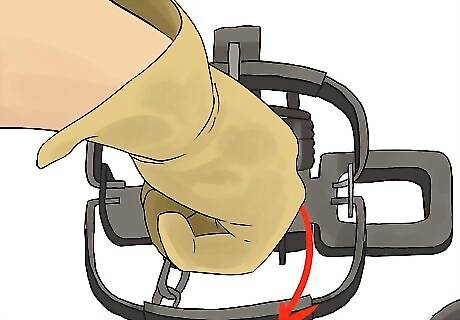
Carefully raise the pan. A foothold trap's "pan" is the circular part of the trap in between the jaws. The animal springs the trap by stepping on the pan. Use your thumb to hold the dog and jaw together. Then, raise the pan into position by reaching under the loose jaw with your fingers and gently lifting the pan up. Don't reach down through the trap or reach over either jaw. If you do this, you run the risk of injury, should you slip. Your trap is now set - handle it with extreme care. Ideally, your pan should sit level in the trap, not slanted up. If you need to make an adjustment to the pan, be sure to work under the loose jaw of the trap. Never, ever reach between the jaws to make an adjustment. Note also that some types of foothold traps allow you to adjust the tension in the pan so that it only triggers under a certain amount of weight. For beaver, 4-5 pounds is ideal, as this keeps the trap sensitive while allowing you to avoid smaller animals.
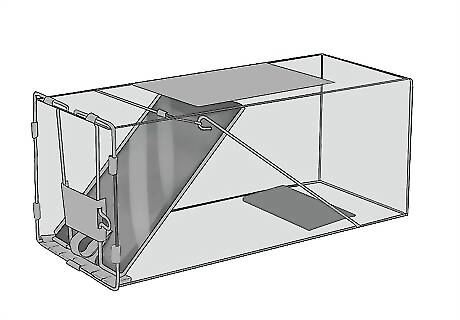
Choose a good spot. When setting a live trap, it's important to choose a location for the trap where the animal will be in a minimum of danger for the time that it's stuck in the trap. With beavers, it's important to not put live traps in water deep enough to cause the animal to drown. Instead, put them above water or at the very edge of a lake or stream, where water is only an inch or so deep. Secure your trap well so that it can't fall into deeper water. It's also wise not to use live traps in areas exposed to extremely cold or hot weather to avoid the risk that the trapped animal may be injured or die due to exposure. Note that live traps come in several varieties. Many of the most common are metal, box-like traps with doors at either end, but other types of live traps, including traps that resemble suitcases, are used. The steps in this section refer to the common box variety.
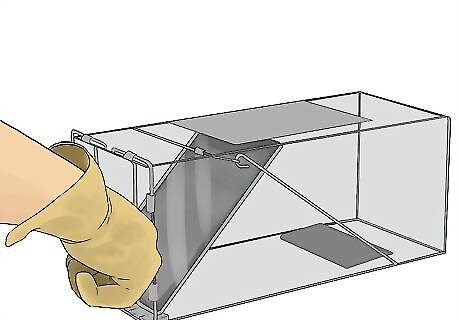
Open either end of the box. Box traps usually feature locking doors at either end. To open either door, often, you'll need to push two locking bars towards the interior of the cage to release the lock holding the door closed. Then, keeping one arm on top of the box to hold it steady, raise the door until it rests roughly horizontally.
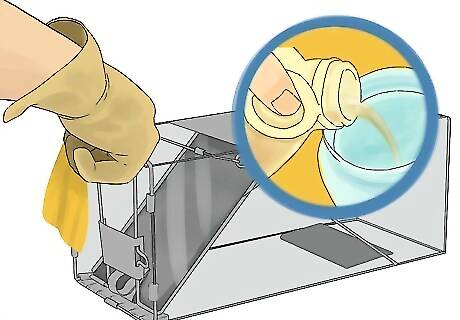
Set your bait. Unlike the other traps in this article, which trap and kill the animal when it unwittingly springs it, live traps depend upon the animal willingly wandering into the trap. Because of this, bait can be crucial for a successful trapping effort. For beavers, bait is usually in the form of a liquid scent. Soak a small rag in this scent and hang it inside the trap over the trip pan. When the beaver goes to investigate the scent, it will step on the pan and spring the trap, lowering the door(s) and trapping itself inside. In terms of baits, many trappers use castor scent, a commercially-available fluid naturally produced by beavers to mark their territory.
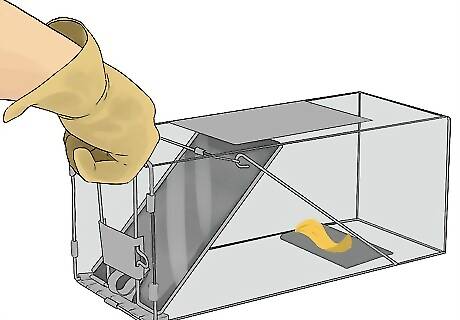
Secure the door with the dog. Like the other types of traps discussed in this article, most live traps have a dog piece that holds the trap's door open and releases it when the trap is sprung. When you've raised the door to its highest position, secure the dog on the corresponding notch on the door - here, individual traps' mechanisms will vary - and carefully release it. If done correctly, the door should remain open, held in place by the dog.

If necessary, open the other door. Most box-type live traps have one door at either end of the trap. You may want to open both doors to allow a beaver to enter the trap from either end. However, depending on where you've chosen to place your trap, this may not be necessary. For instance, if you place the trap at the edge of a lake or stream, you're probably only expecting beavers to approach it from the direction of the water, so the second door isn't needed.
Trapping Responsibly
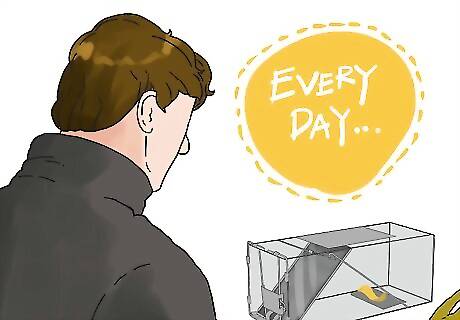
Check your trap every day. Whether you use a killing trap or a live trap, it's important to come back and check it every day. With a live trap, the reason for this is obvious - the beaver is stuck inside the trap and may suffer or go hungry if it's kept inside for a long period of time. However, you'll want to frequently check your killing traps as well, especially if you're interested in the beaver's pelt. The longer the beaver is left dead in the trap, the greater the effects of decomposition and the greater the chance its body will be eaten by scavengers. Additionally, on the off chance that a killing trap does not instantly kill its intended target, you'll want to be able to release the animal or put it out of its misery as soon as you can.
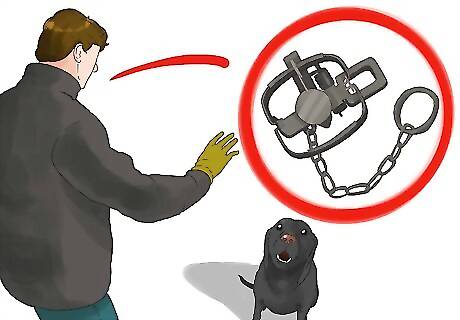
Avoid areas where pets roam. Avoid using any sort of trap in areas that are known to be frequented by pets, especially dogs. Smaller dogs can be roughly beaver-sized and thus can be maimed or killed by beaver traps. Don't even use live traps in areas where pets roam, as, if you accidentally catch a pet, it will be your responsibility to find and notify the owner, who may be under the assumption that their pet has run away. In rural areas, people sometimes let their dogs wander within a few miles of their home. Be very conservative when setting your traps - most cautious trappers won't use traps within several miles of any residence.
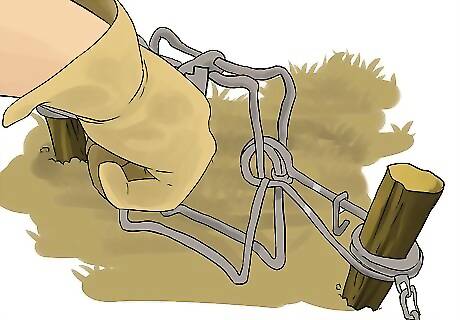
Adjust bodygrip traps to account for otters. Otters often live in the same types of habitats as beavers - lakes and streams in wooded areas. Otters can easily spring bodygrip traps intended for beavers, so, if you're using a bodygrip trap, consider the possibility that this will happen and accommodate by sliding the trigger so that it hangs along one side of the "square", rather than in its center. Otters are slimmer than beavers, so, by doing this, you increase the chance that otters will pass harmlessly through the trap while not hampering your ability to catch beaver significantly. Obviously, don't attempt to do this when the trap is armed. Instead, do it as you're arming the trap.

Observe all local laws regarding traps. Though some states have open season on beavers year-round, this doesn't mean there aren't any rules regulating trapping activity. Most jurisdictions will have rules regarding the types of traps that can be used, the locations where trapping is allowed, the sorts of things you can use trapped beaver for, and more. If you're in doubt, double-check with local officials before attempting to trap beaver. The relatively small amount of time it takes to check your local hunting authority's website is well worth the money you'll avoid in the form of fines if you break the law. One common law in virtually all jurisdictions is that you may not trap beavers (or, for that matter, any animal) on someone else's private property without their express permission.











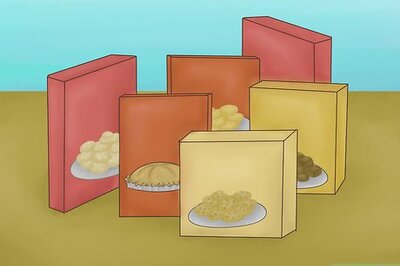






Comments
0 comment